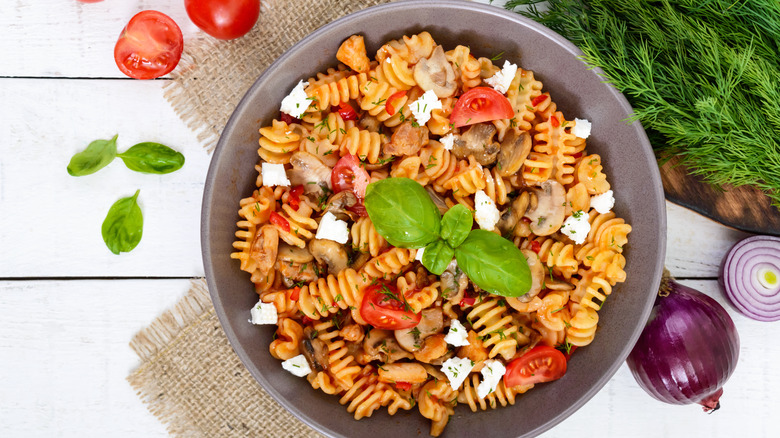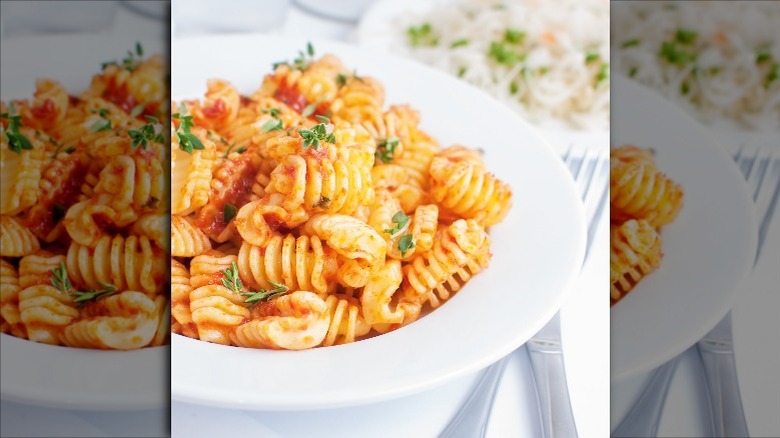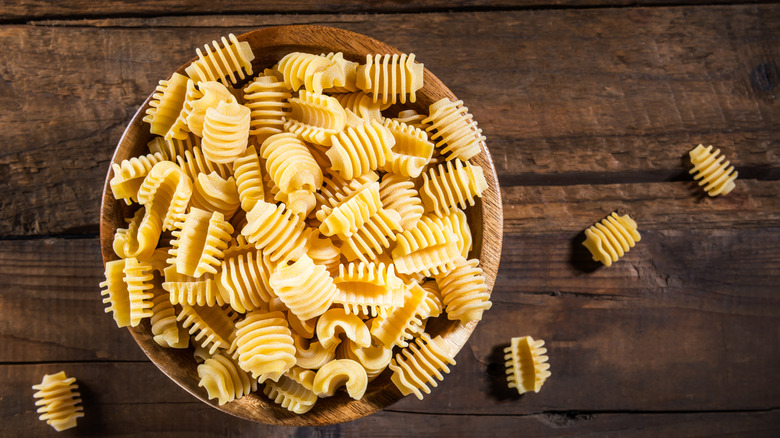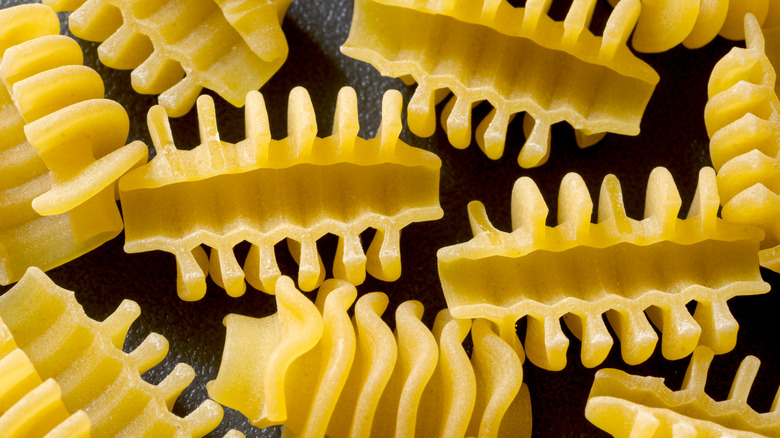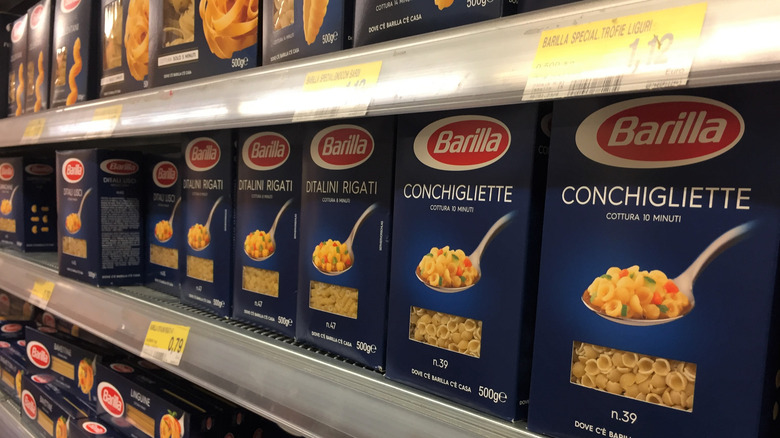The Untold Truth Of Radiatori Pasta
If you haven't heard of radiatori pasta, then you might be curious about what exactly this pasta is, and what makes it worth your while. After all, many pasta shapes have been around so long that they are very well-known classics. From angel hair and spaghetti to gnocchi and farfalle, there are tons of different pasta shapes to choose from. However, radiatori pasta is just different enough that you'll definitely want to give it a try.
Radiatori is a relatively short and small pasta that is very similar to shapes like rotini and fusilli. The primary difference is that radiatori's edges are ruffled and look very much like the radiators you'd find under the hood of a car, specifically a Bugatti (via The Pasta Project). But all of those ruffles make this pasta perfect for serving up with lots of extra sauce. So if you're someone who likes the sauce even more than the vehicle that's transporting it, this pasta is likely for you. Apart from its actual existence, there are several unusual facts about radiatori pasta you might not be aware of.
Radiatori pasta is one of the newest pasta shapes
While there is some discrepancy as to just how new the radiatori pasta shape is, it remains one of the very last pasta shapes to be created. Some people believe this specific shape was formed some time between World War I and World War II or between 1914 and 1945 (via Share the Pasta). But according to The Pasta Project, it appears the majority of people believe the pasta shape was developed sometime during the 1960s.
The period that most people accept as the time frame in which radiatori pasta was created has everything to do with what the pasta resembles. It reminds some of early heating fixtures you'd find nestled in old apartments and homes. To others, it looks just like the radiator grills you'd find on cars of the 1960s. Even though we may never know exactly which year the pasta shape was developed, it remains one of the only pasta shapes to come out of the 20th century.
Its unusual shape makes it very versatile
Unlike older pasta shapes, radiatori pasta was not made with a specific dish in mind (via The Pasta Project). This versatility means it can be added to tons of different kinds of pasta dishes. From soups and pasta salads to baked pastas and beyond, there are endless ways to use radiatori pasta. This is largely due to its highly textural shape.
The shape not only adds an eye-catching appeal to many dishes, but it also helps the pasta hold onto other ingredients that are mixed in with it. The ruffles add surface area to the pasta, which means it has more room to hold onto and soak up the sauce or toppings that are added to the pasta. Other ingredients like chopped vegetables, cheese, and herbs can also get stuck between the ruffled edges, so you can pack tons more flavor into the dish.
It was designed after a famous car
According to The Pasta Project, the pasta's name directly translates to "radiator," so it clearly was inspired by the modern invention. But while the pasta shape definitely resembles a car's radiator, it was not designed to look like just any car's radiator. The signature shape is said to be modeled after another famous Italian creation, the Bugatti.
Given the sheer number of beautifully designed cars and even scooters to come from Italy, it's no wonder they designed a new, modern pasta shape to reflect their work from the Industrial period (via Pasta Nostra). Few things could be more Italian than that apart from perhaps a Versace or Gucci-themed pasta shape to represent the country's incredible clothing design world too.
So the next time you pick up a bag of the pasta, take a close look at its shape and appreciate it for what it is: an impressively designed edible piece of art all made possible by modern machinery.
It's made using a very simple utensil
Machinery is a very important component to radiatori pasta, and not just because it was designed after the Bugatti. Unlike many other pasta types, Pasta Nostra notes radiatori pasta was designed to be made by machine rather than by hand — fitting, considering it's one of the more modern pasta shapes. While making your own fresh pasta at home can be a fun project, the easiest way to enjoy radiatori pasta specifically is to simply buy it once it has been made and pressed by machine.
However, there is a way to make it at home if you really want a challenge in the kitchen. Radiatori pasta actually starts out very similar to gnocchi. A gnocchi press with very deep ridges and some elbow grease could also be used to make the pasta at home. If you don't have the press, you can use a fork to stamp those grooves into the side. But if you want to make life easy, just order it pre-made.
Your local market might not stock them
Since radiatori pasta is a relatively new shape and it isn't used for specific dishes, there's actually a very good chance that your local supermarket might not stock it. Though you could likely find radiatori pasta at specialty shops or from pasta makers at farmers markets, there's a much easier way to find and buy the pasta.
Many big brand-name pasta companies like Barilla, De Cecco, and Rummo make and sell radiatori pasta (via The Pasta Project). That means you can order it from your favorite pasta brand online. Try visiting the brand's website or look for it on retail websites like Amazon as well as others. Within days you can have the pasta shipped straight to your door so you can get creative and try out new recipes. No matter what time of year, chances are there's a radiatori pasta dish to suit the season.
